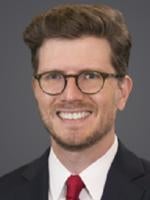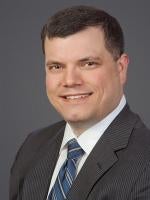On April 14, 2020, the State of New York filed a lawsuit against the U.S. Department of Labor (DOL) seeking declaratory and injunctive relief in the U.S. District Court for the Southern District of New York. In the lawsuit, New York challenges the April 1, 2020, final rule that the DOL issued implementing the emergency family leave and paid sick leave requirements of the Families First Coronavirus Response Act (FFCRA). The final rule, which is currently effective, expires on December 31, 2020.
New York is seeking to sever and vacate certain provisions of the final rule, alleging that they “unlawfully narrow” the number of individuals covered by the FFCRA in contravention of the Administrative Procedure Act. New York further asserts that the final rule undermines the FFCRA by codifying “broad, unauthorized exclusions” from employee eligibility that “risk swallowing Congress’s intended protections,” and creating “whole cloth” new restrictions and burdens on affected employees.
The case has been assigned to District Judge J. Paul Oetken, who ordered expedited briefing on New York’s Motion for Summary Judgment to be completed by May 5, 2020. We expect that Judge Oetken will issue a decision on the motion shortly thereafter.
The State’s Arguments
New York advanced four central arguments against the DOL’s final rule.
- The final rule imposes work availability requirements that unlawfully deny paid sick leave and emergency family leave to employees.
New York argues that the final rule provides employers with undue discretion to deny employees paid sick leave and emergency family leave that employees are otherwise entitled to under the FFCRA. Specifically, the state contends that the final rule allows employers to deny employees paid sick leave or emergency family leave where the employer determines that it “does not have work” for the employee under certain conditions.
According to New York, the work availability requirement runs contrary to the statutory language of the FFCRA that the employer “shall” provide such paid leave under qualifying conditions. New York also argues that other language in the FFCRA mandates Congress’s intent not to allow for employer discretion in denying leave if a qualifying condition has been met.
The final rule’s definition of “health care provider” is contrary to the plain language of the statute.
In addressing the FFCRA’s exemptions for “health care providers,” New York argues that the DOL prescribed a broad definition that improperly excluded millions of individuals from protection without a statutory basis. Specifically, the state argues that the final rule’s broad construction conflicts with the statutory language of the FFCRA.
New York further argues that Congress adopted the existing definition of “health care provider” under the Family and Medical Leave Act (FMLA), which is limited to licensed medical professionals who provide medical services to individuals. Instead, the state argues that the final rule excludes certain individuals employed at colleges or universities, medical schools, and hospitals, as well as independent contractors.
The DOL has no statutory authority either to prohibit intermittent leave or to condition its use on employer consent.
Under the final rule, employees may take intermittent FFCRA leave at different periods of time for certain qualifying conditions, subject to employer approval. However, New York argues that Congress did not authorize the DOL to require that FFCRA leave be taken in a continuous period.
Specifically, New York argues that the final rule exceeds statutory authority by requiring that an employee take intermittent paid sick leave only if the employee (1) teleworks from home and is permitted to do so by his or her employer or (2) reports to a worksite and requires paid sick leave to care for a child whose school is closed and is permitted to do so by his or her employer. In support of its argument, New York points to the statutory text that references leave “for any day,” rather than a continuous block of time, which suggests Congress’s intent that leave can be used in any increments.
The DOL has no statutory authority to impose the final rule’s documentation requirements as a precondition to taking leave.
The final rule requires that employees seeking leave provide certifications for qualifying reasons and permits employers to request additional documentation. New York argues that the DOL exceeded its statutory authority by placing “per se obstacles” in the path of employees who would otherwise qualify for paid leave under the FFCRA.
In support, New York notes that the FFCRA’s emergency family medical leave provision requires only that notice be provided where a triggering event is “foreseeable.” By analogy, New York contends that the FMLA requires prior notice only where the necessity for leave is “foreseeable” based on an expected birth, adoption placement, planned medical treatment, or a covered active-duty deployment. In addition, New York argues that preconditioning leave would cause undue delay and frustrate Congress’s intent to provide paid sick leave.
Key Takeaways
Courts typically apply a highly deferential standard to agency interpretations of congressional actions, meaning that New York’s lawsuit faces an uphill battle. However, should New York’s attempt to enjoin key aspects of the DOL’s regulations be successful in whole or in part, employers would need to significantly alter their approaches to documenting and providing FFCRA leave and benefits.





 />i
/>i

